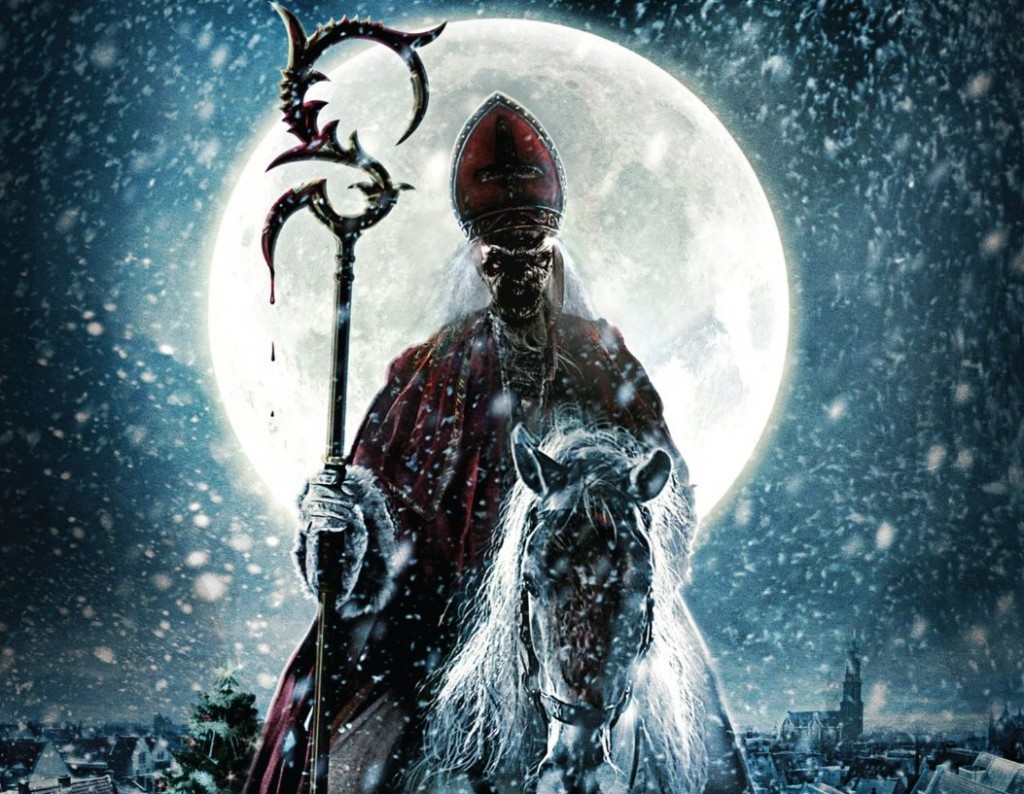Culture
The Bloody Truth: Saint Nick

Every week in The Bloody Truth, Calhoun Kersten examines the deeper meanings beneath one of cinema’s deepest genres: horror.
The holiday season may be over and gone, but the spirit is not. I’m not sure what it is about Christmas time – maybe it’s the happy families or the delightful music, but for the month of December, I tend to feel like punching strangers in the face. Okay, so I lied. I’m not that into the holidays, but luckily, the horror genre has made it bearable. That’s right, I’m talking about the beloved sub-genre of the killer Santa movie. Sure, there are classics like Silent Night, Deadly Night or Christmas Evil, but in recent years, killer Santa hasn’t been getting that much love. Maybe that’s why Saint Nick, the Dutch film about a murderous Saint Nick, is such a welcome addition to sub-genre. He’s not a madman in a ridiculous suit. No, director Dick Maas (I know, hilarious, right?) goes back to the origin of the myth.
Starting in 1492, the movie details the murder of corrupt bishop Niklas who loots and murders innocent villagers. Cut to modern day, where the murderous ghost of Niklas has decided to wreak havoc again. I think there’s something about a ghost ship or something too, but honestly, it’s just overwhelming to see how pointed the film is in its “Christmas” message. I mean, good lord, I thought I was bitter about the holidays. Sure, it’s easy to write Saint Nick off as another exploitative addition to the world of horror, but the movie has actually got some pretty intelligent commentary to it.
Even on the surface, Saint Nick obviously has something to say. It doesn’t take too much to see the point that Maas is trying to make. After all, he starts out by displaying Saint Nick murdering women and children. It’s pretty much the furthest thing from the modern interpretation of Santa Claus you can get. Saint Nick states with not-so-subtle conviction that the meaning of Christmas is something that toy companies have created to get people to buy things that they don’t need. Sure, we’ve all seen those tired Facebook posts about “consumerism” and “the true meaning of the season,” but isn’t slaughtering people a lot more effective than social media? It’s at least a lot more entertaining…and somehow less self-righteous. Saint Nick makes the same point, but in a clever way that disguises its morality tale by covering it in blood and guts. Still, it is a testament to Maas’s storytelling that he can so effortlessly convey the tendency of folks to turn fact (the murderous side of Santa) into fiction (bringing presents to all the boys and girls).
Still, the message doesn’t end there. You know how I was talking about the consumerism angle? Well, Saint Nick manages to shoehorn that in there too, with some prickly dialogue. The movie states point-blank that the holiday, in essence, is bullshit. They actually say that whole line about Saint Nick being invented by corporations. Still, it makes the same point even earlier with Niklas’s introduction in the film. Like I said, “Saint” Nick is seen pillaging and plundering, all for the sake of bloodlust and, more importantly, money. The ultimate sinner in the movie is the man who wants money. He is shown as ruthless, murderous, and essentially, the very incarnation of evil. Saint Nick’s anti-consumer message is heard loud and clear.
While the whole killer Santa sub-genre is, well, classic, Saint Nick is a surprisingly in-depth examination of the horror of the holiday. Sure, it may not be subtle about it, but the tongue-in-cheek technique works for the Dutch film. It’s the kind of glib moralizing that adds to the film, instead of turning viewers off to its obvious message.